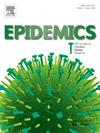基于有限数据估计流感住院的前瞻性实时迁移学习方法
IF 2.4
3区 医学
Q2 INFECTIOUS DISEASES
引用次数: 0
摘要
准确、实时的流感住院预测将有助于未来的资源分配和公共卫生准备。最先进的机器学习方法是产生这种预测的一种很有前途的方法,但它们需要大量的历史数据来进行适当的训练。不幸的是,美国50个州的流感住院数据只能从2020年初开始获得。此外,这些数据远非完美,因为在卫生系统开始持续提交数据之前的几个月里,这些数据都没有得到充分报告。为了解决这些问题,我们提出了一种迁移学习方法。我们将目前可用的州级流感住院两季数据集额外扩展了十个季节。我们的方法利用流感样疾病(ILI)数据来推断流感住院的历史估计。这种数据增强使先进的机器学习技术、多视界训练和模型集成得以实现,从而改善住院预测。我们对机器学习方法的性能进行了评估,方法是对未来几周进行前瞻性预测,并在2022-2023和2023-2024两个季节向疾病控制与预防中心提交实时预测。我们的方法证明了良好的准确性和可靠性,在2022-23赛季获得了第四名(在20支参赛队伍中),在2023-24赛季获得了第二名(在20支参赛队伍中)。我们的研究结果强调了数据增强和知识转移在将机器学习模型应用于只有有限历史数据可用的公共卫生监测中的效用。本文章由计算机程序翻译,如有差异,请以英文原文为准。
A prospective real-time transfer learning approach to estimate influenza hospitalizations with limited data
Accurate, real-time forecasts of influenza hospitalizations would facilitate prospective resource allocation and public health preparedness. State-of-the-art machine learning methods are a promising approach to produce such forecasts, but they require extensive historical data to be properly trained. Unfortunately, data on influenza hospitalizations, for the 50 states in the United States, are only available since the beginning of 2020. In addition, the data are far from perfect as they were under-reported for several months before health systems began consistently submitting their data. To address these issues, we propose a transfer learning approach. We extend the currently available two-season dataset for state-level influenza hospitalizations by an additional ten seasons. Our method leverages influenza-like illness (ILI) data to infer historical estimates of influenza hospitalizations. This data augmentation enables the implementation of advanced machine learning techniques, multi-horizon training, and an ensemble of models to improve hospitalization forecasts. We evaluated the performance of our machine learning approaches by prospectively producing forecasts for future weeks and submitting them in real time to the Centers for Disease Control and Prevention FluSight challenges during two seasons: 2022–2023 and 2023–2024. Our methodology demonstrated good accuracy and reliability, achieving a fourth place finish (among 20 participating teams) in the 2022–23 and a second place finish (among 20 participating teams) in the 2023–24 CDC FluSight challenges. Our findings highlight the utility of data augmentation and knowledge transfer in the application of machine learning models to public health surveillance where only limited historical data is available.
求助全文
通过发布文献求助,成功后即可免费获取论文全文。
去求助
来源期刊

Epidemics
INFECTIOUS DISEASES-
CiteScore
6.00
自引率
7.90%
发文量
92
审稿时长
140 days
期刊介绍:
Epidemics publishes papers on infectious disease dynamics in the broadest sense. Its scope covers both within-host dynamics of infectious agents and dynamics at the population level, particularly the interaction between the two. Areas of emphasis include: spread, transmission, persistence, implications and population dynamics of infectious diseases; population and public health as well as policy aspects of control and prevention; dynamics at the individual level; interaction with the environment, ecology and evolution of infectious diseases, as well as population genetics of infectious agents.
 求助内容:
求助内容: 应助结果提醒方式:
应助结果提醒方式:


